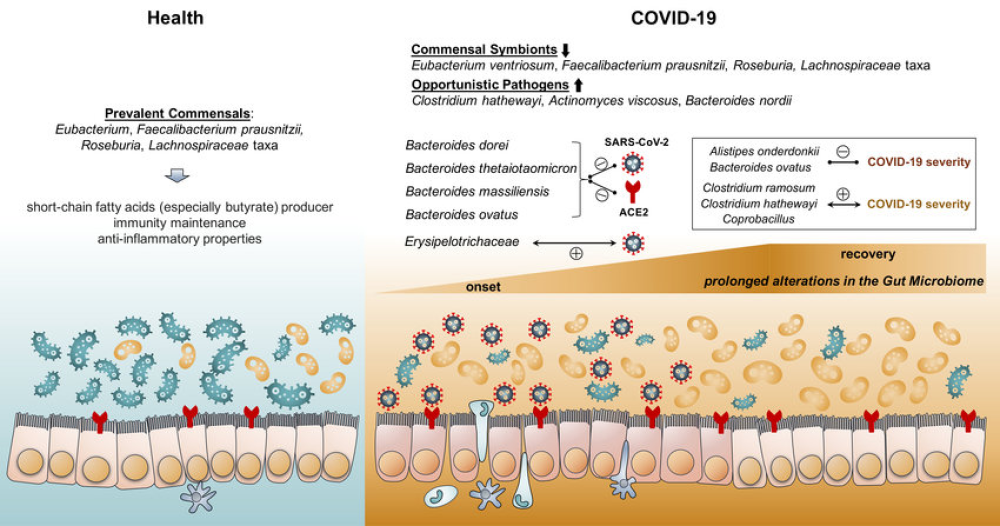World J Gastroenterol. 2021 Jun 21; 27(23): 3208–3222.Published online 2021 Jun 21. doi: 10.3748/wjg.v27.i23.3208PMCID: PMC8218355PMID: 34163106
Authors: Klara Megyeri, Áron Dernovics, Zaid I I Al-Luhaibi, and András Rosztóczy
Abstract
Severe acute respiratory syndrome coronavirus 2 (SARS-CoV-2) recently emerged as a highly virulent respiratory pathogen that is known as the causative agent of coronavirus disease 2019 (COVID-19). Diarrhea is a common early symptom in a significant proportion of patients with SARS-CoV-2 infection. SARS-CoV-2 can infect and replicate in esophageal cells and enterocytes, leading to direct damage to the intestinal epithelium. The infection decreases the level of angiotensin-converting enzyme 2 receptors, thereby altering the composition of the gut microbiota. SARS-CoV-2 elicits a cytokine storm, which contributes to gastrointestinal inflammation. The direct cytopathic effects of SARS-CoV-2, gut dysbiosis, and aberrant immune response result in increased intestinal permeability, which may exacerbate existing symptoms and worsen the prognosis. By exploring the elements of pathogenesis, several therapeutic options have emerged for the treatment of COVID-19 patients, such as biologics and biotherapeutic agents. However, the presence of SARS-CoV-2 in the feces may facilitate the spread of COVID-19 through fecal-oral transmission and contaminate the environment. Thus gastrointestinal SARS-CoV-2 infection has important epidemiological significance. The development of new therapeutic and preventive options is necessary to treat and restrict the spread of this severe and widespread infection more effectively. Therefore, we summarize the key elements involved in the pathogenesis and the epidemiology of COVID-19-associated diarrhea.
For More Information: https://www.ncbi.nlm.nih.gov/pmc/articles/PMC8218355/
